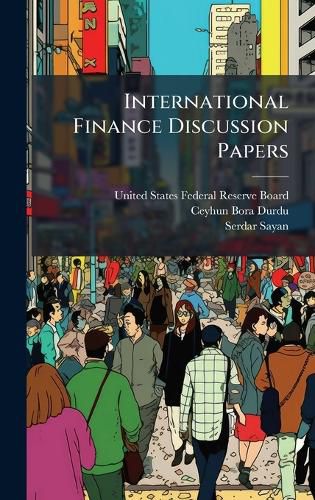Readings Newsletter
Become a Readings Member to make your shopping experience even easier.
Sign in or sign up for free!
You’re not far away from qualifying for FREE standard shipping within Australia
You’ve qualified for FREE standard shipping within Australia
The cart is loading…






This paper analyzes the implications of remittance fluctuations for various macroeconomic variables and Sudden Stops. The paper employs a quantitative two-sector model of a small open economy with financial frictions calibrated to Mexican and Turkish economies, two major recipients, whose remittance receipts feature opposite cyclical characteristics. We find that remittances dampen the business cycles in Mexico, whereas they amplify the cycles in Turkey. Their quantitative effects in the long run, approximated by the stochastic steady state are mild. In the short run, however, remittances have quantitatively large impacts on the economy, when the economy is borrowing constrained. This is because agents in the economy cannot adjust their precautionary wealth to sudden tightening in credit, hence, fluctuations in remittances get magnified through an endogenous debt-deflation mechanism. Our findings suggest that procyclical (or countercyclical) remittances can play a significant deepening (or mitigating) role for Sudden Stops.
This work has been selected by scholars as being culturally important, and is part of the knowledge base of civilization as we know it. This work was reproduced from the original artifact, and remains as true to the original work as possible. Therefore, you will see the original copyright references, library stamps (as most of these works have been housed in our most important libraries around the world), and other notations in the work.
This work is in the public domain in the United States of America, and possibly other nations. Within the United States, you may freely copy and distribute this work, as no entity (individual or corporate) has a copyright on the body of the work.
As a reproduction of a historical artifact, this work may contain missing or blurred pages, poor pictures, errant marks, etc. Scholars believe, and we concur, that this work is important enough to be preserved, reproduced, and made generally available to the public. We appreciate your support of the preservation process, and thank you for being an important part of keeping this knowledge alive and relevant.
$9.00 standard shipping within Australia
FREE standard shipping within Australia for orders over $100.00
Express & International shipping calculated at checkout
This paper analyzes the implications of remittance fluctuations for various macroeconomic variables and Sudden Stops. The paper employs a quantitative two-sector model of a small open economy with financial frictions calibrated to Mexican and Turkish economies, two major recipients, whose remittance receipts feature opposite cyclical characteristics. We find that remittances dampen the business cycles in Mexico, whereas they amplify the cycles in Turkey. Their quantitative effects in the long run, approximated by the stochastic steady state are mild. In the short run, however, remittances have quantitatively large impacts on the economy, when the economy is borrowing constrained. This is because agents in the economy cannot adjust their precautionary wealth to sudden tightening in credit, hence, fluctuations in remittances get magnified through an endogenous debt-deflation mechanism. Our findings suggest that procyclical (or countercyclical) remittances can play a significant deepening (or mitigating) role for Sudden Stops.
This work has been selected by scholars as being culturally important, and is part of the knowledge base of civilization as we know it. This work was reproduced from the original artifact, and remains as true to the original work as possible. Therefore, you will see the original copyright references, library stamps (as most of these works have been housed in our most important libraries around the world), and other notations in the work.
This work is in the public domain in the United States of America, and possibly other nations. Within the United States, you may freely copy and distribute this work, as no entity (individual or corporate) has a copyright on the body of the work.
As a reproduction of a historical artifact, this work may contain missing or blurred pages, poor pictures, errant marks, etc. Scholars believe, and we concur, that this work is important enough to be preserved, reproduced, and made generally available to the public. We appreciate your support of the preservation process, and thank you for being an important part of keeping this knowledge alive and relevant.